Ohio is well known for its contributions in aviation and spaceflight. From the Dayton bicyclists, Wright Brothers, to spacefaring pioneers, John Glenn and Neil Armstrong, Ohio has been at the forefront of aviation, aerospace, and space exploration. While these accolades and laurels have been earned through innovation, discovery, and raw talent, it is the academic prowess that has been at the forefront. As we move into new areas of exploration, including robotic and human-tended missions beyond Earth’s orbit and the rapidly growing commercial space industry, we will harness the knowledge and competencies of our faculty, students, and partners. We will build on the foundation laid before us to achieve effective and lasting contributions in this new paradigm.
Meet the Director
The University of Cincinnati recently named Professor Charles Doarn as the inaugural director of the institute. Professor Doarn holds degrees from The Ohio State University and the University of Dayton. He serves as a Research Professor in the Department of Environmental and Public Health Sciences within the College of Medicine as is the Program Director of UC’s Master of Public Health. His full CV can viewed here.
Director’s Message –
I am delighted to support the UC Office of Research in this new endeavor. Most of my career has been at the intersection of medicine, public health, engineering and program management. While I remain fully engaged in medicine and public health with ties to NASA, it is my program management skills that I will apply to this new institute in helping shape the University of Cincinnati’s efforts in aerospace through mutually-beneficial partnerships with NASA’s aerospace engineering activities, the United States Air Force at Wright Patterson, industry partners, academia, and the State of Ohio in expanding our boundaries in education and discovery. Each new graduate of our engineering and applied sciences program as well as other disciplines within our vibrant urban campus will be better prepared as a result of their involvement with our faculty, collaborators, and this institute. Feel free to contact me by phone at (513) 558- 6148 or by email at charles.doarn@uc.edu
Advisory Board
The Institute is guided by a diverse group of subject matter experts internal and external to UC. These individuals, listed below bring interdisciplinary prowess to Institute, providing strategic advise as it grows in stature and capability. From time to time, individuals will join the Board.
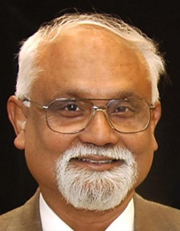
Amit Bhattacharya, PhD
Professor
Department of Environmental and Public Health Sciences
UC College of Medicine
Dr. Bhattacharya holds a PhD degree in biomedical engineering and a MS in fluid mechanics/heat transfer, from the University of Kentucky.
He is a Professor of Environmental Health, Biomedical Engineering & Mechanical Engineering at the University of Cincinnati.
He is the founding Director of the EDDI Lab – Early Detection of Degenerative Disorders & Innovative Solutions. Dr. Bhattacharya
has made significant contributions in a variety of research domains: wearable and ingestible sensors for real-time assessment/prediction
of hyperthermia among first responders during live firefighting incidents, genetic susceptibility impact on postural stability and gait functions
of naval aviators, therapeutic aspects of cardio-synched whole body vibration, as a countermeasure for cardiovascular deconditioning resulting from
weightlessness, and the development of noninvasive, techniques for the quantification of postural imbalance as an indicator of neurotoxicity and identification
of preclinical biomechanical markers of osteoarthritis and osteoporosis. His research, in the area of noninvasive quantification of postural balance for
use in early detection of chemical toxicity, received national recognition when he was invited by the National Institute of Environmental Health Sciences (NIEHS)
to present a “hand on” demonstration of this technique at the National Medical Research Day. Dr. Bhattacharya is frequently invited to serve as ad hoc member
on a variety of scientific review panels organized by U.S. National Academies of Sciences & Engineering, National Institute of Health (NIH), NIOSH, CDC, DOD
and international organizations. He is a Fellow of the Biomedical Engineering Society & Senior member of the National Academy of Inventors.
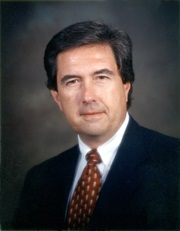
John A. Benek, PhD
Senior Scientist
Air Force Research Laboratory, Aerospace Systems Directorate
Wright Patterson Air Force Base
John A. Benek has over 50 years of leadership experience in the research, development, and application of advanced wind tunnel testing methods, Computational Fluid Dynamics, and the integration of wind tunnel testing and advanced fluid dynamics modeling and simulation methods. He is currently the senior scientist for aeronautics in the Air Force Research Laboratory, Aerospace Systems Directorate at the Wright-Patterson Air Force Base in Ohio. Prior to his current position, John has 30 years of experience at the Air Force, Arnold Engineering and Development Center where became the Manager of the Computational Fluid Dynamics Department, Microcraft, Inc./AEDC Operations. He also has served as the Manager of high-Performance Computing, Test and Evaluation Support, Raytheon/Army Research Lavatory. John earned his B.S. degree from the University of Cincinnati and his M.S. and Ph.D. degrees in Aerospace Engineering from the University of Tennessee. He has been active in professional societies serving as the Chairman of the University of Tennessee Space Institute Chapter of Sigma Xi, the Scientific Research Honorary Society, Chairman of the Tennessee Section of the AIAA, Chairman of the AIAA Atmospheric Fluid Mechanics and of the Applied Aerodynamics Technical Committees. John is a Fellow of the AIAA; he received the AIAA Tennessee Arnold Award, and the AIAA Aerodynamics Award. He is a Distinguished Alumnus of the University of Cincinnati and a member of the university Advisory Board for the College of Engineering and Applied Science Department of Aerospace Engineering and Engineering Mechanics.
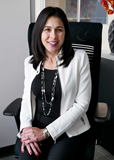
Elaine Bryant
Managing Director, Military and Federal Sector
JobsOhio
Dayton, Ohio
Ms. Bryant is the Dayton Development Coalition's Executive Vice President for Aerospace and Defense. She is also the Managing Director of the Federal and Military sector for JobsOhio.
Elaine has over two decades of experience in the U.S. Air Force. She holds a BS in Engineering from The Air Force Academy and a master’s in Aerospace from the University of Maryland. Her
first assignment was as an F-16 maintenance officer at Hill AFB, UT. She was later stationed at Wright-Patterson Air Force Base to serve in the Air Vehicles directorate of AFRL, followed by positions
at HQ AFMC as Executive Officer to the Chief of Staff, and Aide-de-Camp to the Air Force Material Command Commander. Elaine then served as an Assistant Professor for Aeronautics at the Air Force
Academy, and then Commander of Cadet Squadron 24. She later held program management and engineering leadership positions at the F-35 JPO and SAF/AQR in Washington, D.C.
Elaine returned to WPAFB to serve as Commander of the Foreign Material Exploitation Squadron at the National Air and Space Intelligence Center. Her final Air Force assignment was Deputy Chief of the Human Systems Program Office.
In her current role, Elaine’s focus is preserving, protecting and expanding missions at federal and military installations in the Dayton region and across the state of Ohio.
During the 2020 Covid-19 pandemic, she was hand-picked to serve as a loaned executive to Governor DeWine’s staff to establish PPE acquisition practices and execute the purchase of PPE for the state.
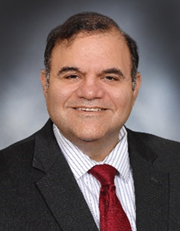
Kelly Cohen, PhD
Professor
Department of Aerospace Engineering and Engineering Mechanics
UC College of Engineering and Applied Science
Dr. Cohen is the Interim Department Head (since 2017) and the Brian H. Rowe Endowed Chair at the Department of Aerospace Engineering and Engineering Mechanics at the University of Cincinnati.
He's an Associate Fellow of the AIAA (American Institute of Aeronautics and Astronautics), past Chair of AIAA’s Intelligent Systems Technical Committee and Senior Member, IEEE. Dr. Cohen received
all of his three degrees from the faculty of Aerospace Engineering at the Technion, Israel. Prior to joining UC in 2007, he has 22 years of experience in military R&D organizations working on
UAVs and Air Mobility systems and technologies. Furthermore, his main expertise lies in the area of Artificial Intelligence (AI), intelligent systems, UAVs systems and operations. He has
utilized genetic fuzzy logic-based AI algorithms for decision-making in aerospace and bio-medical applications. Since 2010, he has graduated 10 PhD students and 26 MS students and secured
around $6.0M in research funding at UC. During the past 7 years, he has secured grants from NSF, NIH, USAF, DHS, OFRN and NASA to develop algorithms for UAV applications as well as AI for bio-medical applications.
He has over 115 per reviewed archival publications including 20 book chapters, and another 340 conference papers/presentations, and invited seminars. Dr. Cohen's current research team includes 6 full time staff, 8 PhD,
7 MS and numerous undergraduate students. Additionally, he serves on the Editorial Boards of three international journal publications, namely, Unmanned Systems, the International Journal of Unmanned Systems Engineering (IJUSEng)and Automation.

Richard J. Harknett, PhD
Professor and Chair
Department of Political Science
UC College of Arts and Sciences
Dr. Harknett is Professor and Head of the Department of Political Science and Chair of the Center for Cyber Strategy and Policy
at the University of Cincinnati. He co-directs the Ohio Cyber Range Institute, a state-wide organization supporting education,
workforce, economic, and research development in cybersecurity. He served as Scholar-in-Residence at US Cyber Command and National
Security Agency in 2016-17, where he contributed to the core development of the doctrine of cyber persistent engagement and several
US strategy documents. He served as a Red Team member of the US Congressional Cyber Solarium Commission. He briefs on Capitol
Hill and other US government agencies and has presented both policy briefings and academic research in 11 countries. Professor
Harknett provides public engagement having made over 100 media appearances. He has held two Fulbright Scholar appointments: in
2017 in Cyber Studies at Oxford University, United Kingdom and in 2001 in International Relations at the Diplomatic Academy, Vienna,
Austria, where he holds a professorial lecturer appointment. He has authored over 60 publications in international relations theory,
international security, and cyber security studies with over $19 million in grant support. Aside his two Fulbright awards, Professor
Harknett has been honored to receive numerous recognitions, including at the University of Cincinnati, the Provost Career Award, Office of
Research Faculty Award for Excellence, the University Award for Exemplary Service, and the Edith Alexander Award for Teaching Excellence
as well as the State of Ohio Faculty Innovator Award. He is an avid Liverpool Football Club supporter.
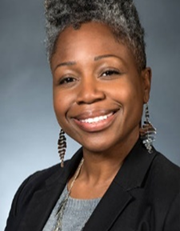
Mary Lobo
Director of Office of Technology Incubation and Innovation
NASA GRC
Mary J. Lobo is the director of the Technology Incubation and Innovation Office at NASA’s John H. Glenn Research Center in Cleveland. She is responsible for aligning the center’s early-stage technology
investment opportunities with its long-term technology goals, strategic partnering for economic development in the region, and the transfer GRC-developed technologies to private industry. She served as
the deputy director and acting director for the office for 1½ years prior to being named director in June 2020.
Lobo has served as the chief of the Test Facility Management Branch where she was responsible for managing all the major research and development ground test facilities at Lewis Field focusing on
long-range planning, marketing facilities to internal and external-to-NASA customers, advocacy of facility maintenance and enhancements, serving as the principle customer interface, coordinating, prioritizing
facility schedules, maintenance, and facility operations budget management. Prior to that, Lobo worked as the Space Simulation Facility Manager where she was responsible for the test coordination and
strategic planning in over two dozen vacuum chambers at Lewis Field. Lobo first began her federal career at NASA’s Glenn Research Center in 2010 as a test engineer after serving many years as a contractor
in the same role. As a test engineer, she led multidiscipline teams to perform buildup and testing activities in Turbomachinery Compressor and Flow Physics facilities.
Throughout her career at NASA, Lobo has been recognized for exceptional support and her participation in outreach activities. She has received multiple NASA Group Achievement Awards and in 2017 received NASA’s
Early Career Achievement Medal. Lobo has a Bachelor of Science degree in mechanical engineering from Case Western Reserve University.
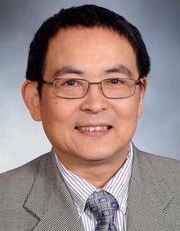
Ou Ma, PhD
Professor
Alan B. Shepard Endowed Chair for Exploration
Department of Aerospace Engineering and Engineering Mechanics
UC College of Engineering and Applied Science
Ou Ma received a BS from Zhejiang University and an MS and PhD degree from McGill University in mechanical engineering and robotics. He is now the Alan B Shepard Chair Professor at the Department of Aerospace
Engineering and Engineering Mechanics, University of Cincinnati (UC), and directing the UC Intelligent Robotics and Autonomous Systems Laboratory (IRAS Lab). His research interests are space robotics and automation,
intelligent robotics, autonomous systems including UAVs and UGVs, human-robot interaction and collaboration, and smart manufacturing. Dr. Ma has led numerous research projects sponsored by NSF, NASA, AFOSR/AFRL, ARO,
and industry in the past two decades. From 2002 to 2017, Dr. Ma worked for the New Mexico State University where he held the title of John Nakayama Professor in Research Excellence and directed the Reduced Gravity and
Biomechanics Laboratory and the UAV and Mechatronics Lab. Prior to that, Dr. Ma worked for MDA in Canada from 1991 to 2002, as a senior control engineer and R&D lead, leading the efforts of contact-dynamics and
system dynamics modeling, simulation, and experimental verification of the two well-known space robots SSRMS (Canadarm2) and SPDM (DEXTUE) for the International Space Station program. He also participated in the
design and development efforts of the DARPA’s Orbital Express robotic mission, the Canadian Space Agency’s SPDM Task Verification Facility (STVF) and the German Aerospace Center’s European Proximity Operation Simulator (EPOS).
Dr. Ma has published over 200 research papers in major robotics and aerospace journals and conferences proceedings and held several patents. He has served as an associate editor for many journals and conferences in the robotics
field and is still serving the editorial boards of Frontier in Robotics and AI, Drones, and ASME Journal of Dynamic Systems, Measurement and Control.
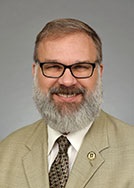
Scott Petersen, MS, MA, MBA
Executive Director
Digital Futures – Cyber Development
UC Office of Research
COL (USA, RET) Scott Petersen is an Executive Director of the Digital Futures initiative at
the University of Cincinnati (UC), focused on Cyber, Unmanned Systems, & Artificial
Intelligence R&D, as well as broad outreach with the Department of Defense. He transitioned to
UC after a 30-year career as an Army Engineer Officer; with most recent position as Chief of the
Strategy and Policy Division of the Army HQ Cyber, Electronic Warfare, and Information
Operations Directorate. He has commanded Engineer units at company, battalion, and brigade
levels—at home and in combat. He oversaw all engineer operations and a $4Billion+
construction program across the US Central Command area of responsibility; served as XO to
the Chief of Engineers; graduated from and taught leadership at the US Military Academy; and
served with US Special Forces. He holds 3 Masters’ degrees in business, industrial-organizational psychology, and national resource strategy. His military awards include the
Distinguished Service Medal, Defense Superior Service Medal, Legion of Merit (2), and Bronze
Star (3). Active TS (SCI-eligible) clearance.

Michael A. Riley, PhD
Professor
Department of Rehabilitation, Exercise, & Nutrition Sciences
College of Allied Health Sciences
Dr. Riley received his BA in Psychology from the University of Louisiana-Monroe in 1994 and his PhD in Experimental Psychology from
the University of Connecticut in 1999. He has been on the UC faculty since 2000, serving from 2000-2021 in the Department of Psychology
(where he was the Director of the Center for Cognition, Action, and Perception) and beginning in 2021 in the Department of Rehabilitation,
Exercise, & Nutrition Sciences. He serves as Director of the Digital Futures Advanced Human Performance & Neuromechanics Laboratory.
His research intersects human biomechanics, neuroscience, and cognitive science, using theoretical perspectives from complex dynamical
systems theory and the ecological approach to perception-action, technological tools such as AR/VR and motion capture, and analytic tools
such as nonlinear time series methods and mathematical modeling. Using this integrative framework, his work investigates human sensorimotor
coordination, control, learning, and adaptation with applications to rehabilitation, injury risk reduction, and preserving and enhancing
human performance. He has published over 125 peer-reviewed articles, and his work has been supported by over $10 million in funding from
agencies including the U.S. Army Medical Research & Development Command, the National Science Foundation, and the National Institutes of Health.
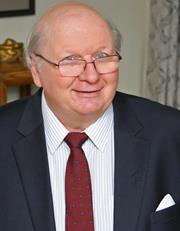
Tomasz Stepinski, PhD
Professor
Thomas Jefferson Endowed Chair for Discovery
Department of Geography
UC College of Arts and Sciences
Tomasz Stepinski is interested in planets (including the Earth), computation, and data science. He is the Thomas Jefferson Chair Professor of Space Exploration in the Department of Geography and GIS of the University of Cincinnati. Tomasz has a master’s in astrophysics and Ph.D. in Applied Mathematics from the University of Arizona. Prior to his appointment at UC in 2010, he held a position of Staff Scientist in the Lunar and Planetary Institute in Houston, TX, a NASA-funded Institute devoted to planetary research and to supporting the planetary science community. Tomasz’s early research concentrated on the formation of the Solar System and other planetary systems. He also pioneered the field of automatic extraction of information from large datasets, for example, automatic identification of craters in images or automated mapping of various landforms from digital elevation models. Since arriving at UC his major concentration is the research on more complete utilization of space-based data (images, topography, etc.) through an intelligent algorithmic exploration of vast datasets. His research was funded by numerous grants from NSF and NASA. The full account of Tomasz’s contributions to science can be found at Google Scholar.
Space Research Institute Fellowship Program
The Institute has established two fellowship programs, one for undergraduates and one for graduate students. These awards will begin in January 2022.
They are:
- SRIDE Fellowship for Discovery - Undergraduates
- SRIDE Fellowship for Exploration – Graduate Students
More information can be found on our
internal funding page.
FS2021
SRIDE Fellowship for Exploration (graduate students)
Aida Ramusovic
PhD student, College of Arts and Sciences - Political Science
Anirudh Chhabra
PhD student, College of Engineering and Applied Sciences – Aerospace Engineering and Engineering Mechanics
Benjamin Russ
MS student, College of Engineering and Applied Sciences – Mechanical Engineering
Daegyun Cho
PhD student, College of Engineering and Applied Sciences – Aerospace Engineering
Yufeng Sun
PhD Student, College of Engineering and Applied Sciences - Aerospace Engineering and Engineering Mechanics
SRIDE Fellowship for Discovery (undergrads)
Rebecca Gilligan
College of Engineering & Applied Science
Recipients of the Inaugural SRIDE Fellowship
Kyle Dunlap
PhD student in Aerospace Engineering
Summer Semester 2021.
Internship Opportunities
The NASA Glenn Research Center in Cleveland, OH (https://www.nasa.gov/centers/glenn/home/index.html) has several internship opportunities. To find out more about these, please visit https://intern.nasa.gov.
Diversity and Inclusion
One of the Institutes key objectives is to encourage all students to get involved in the many facets of aerospace and space exploration. Virtually every discipline at UC has a role to play in preparing leaders for these growing fields. The are several organizations here at UC that encourage students, especially women, to purse careers in engineering, science, and medicine. These include the following:
Women in Flight

Women in Flight at UC is a student organization whose mission is to create a close network of students with interest in the aviation/aerospace industries and to provide support academically, professionally, and socially while promoting the future generation of female students in STEM fields. Our members come from a wide variety of engineering disciplines with a like mindset of unity and support within the organization. The contact for this group in Rachel Wiggins wigginre@mail.uc.edu. Additional information can be found at www.ucwif.com.
Women in Medicine and Science (WIMS)
UC’s College of Medicine has a group entitled ‘Women in Medicine & Science (WIMS)’. This group is dedicated to the recruitment, advancement and retention of women faculty and trainees. Additional information on WIMS can be found at https://med.uc.edu/landing-pages/wims/. Dr. Heather Christensen is the current president. She can be reached at heather.christensen@uc.edu.
Potential Partners
Partnerships and collaborations are predicted on both need and interest. The following is a growing list of potential collaborators with which our faculty and students can become engaged with in pursuit of their academic training and potential future initiatives.
Publications (2015 - Present)
Our faculty and students participate in a wide variety of disciplines which result in scholarly output, including edited books, book chapters, peer-reviewed manuscripts, federal reports, perspectives and editorials. This output is listed here as a key reference list to current and future researchers. It also highlights the broad knowledge base ensconced here at UC that can serve as an enabling tool for collaboration.
Student-Led Papers (Student's Name is underlined)
- Dunlap K, Mote M, Delsing K, Hobbs KL. Run Time Assured Reinforcement Learning for Safe Satellite Docking. AIAA SciTech Forum. San Diego, CA. January 2022.
Charles Doarn
- OCHMO Mishap Investigation Flight Surgeon Handbook – NASA. Editors – JD Polk, CR Doarn. NASA SP-2020-5006891. NASA, Washington, DC. https://www.nasa.gov/feature/spaceflight-mishap-investigation-flight-surgeon-handbook
- Book – Engineering, Life Sciences, and Health/Medicine Synergy in Aerospace Human Systems Integration. The Rosetta Stone Project. Editors. RS Williams and CR Doarn. NASA SP-2017-633. NASA, Washington DC. ISBN 978-1-62683-044-8. https://ntrs.nasa.gov/archive/nasa/casi.ntrs.nasa.gov/20180001256.pdf
- Book - Space Physiology and Medicine – from Evidence to Practice, 4th edition. Editors: A Nicogossian, CL Huntoon, RS Williams, CR Doarn, V Schneider, and JD Polk. 2016. Springer, New York. DOI-10.1007/978-1-4939-6652-3. ISBN 978-1-4939-6650-9 / e-book - ISBN 978-1-4939-6652-3
- Doarn CR, Shimada K, Shepanek M. The Legacy of the Wright State University Aerospace Medicine Residency Program. Aerosp Med Human Perf. 2021;92(9):##-##.
- Doarn CR, Polk JD, Grigoriev, Comtois J-M, Shimada K, Weerts G, Dervay JP, Taddeo TA, Sargsyan A. A Framework for Multinational Medical Support for International Space Station: A Model for Exploration. Aerosp Med Human Perf. 2021;92(2):129-34.
- Simpson AT, Doarn CR, Garber SJ. Interagency Cooperation in the Twilight of the Great Society: Telemedicine, NASA, and the Papago Nation. J Pol History 2020;32(1):25-51.
- Doarn CR. Polk JD, Shepanek M. Health Challenges Including Behavioral Problems in Long Duration Spaceflight. Neurol India. 2019;67(8):S190-95.
- Doarn CR, Travis TW, Currie-Gregg NK, Nicogossian AE, Weyland M, Shepanek M, Null C, Buckland D, Miller S, Liskowsky D, Fuller D, Francisco D, Walton M, Antonsen E, Rochlis J, Witt EG, Williams RS. Engineering, Life Sciences, and Health/Medicine Synergy in Aerospace Human Systems Integration: The Rosetta Stone Project: An Executive Summary. New Space. 2019;7(2):110-13. ePub – December 13, 2018
Ou Ma
- Sathyan A, Cohen K, Ma O. Genetic fuzzy based scalable system of distributed robots for a collaborative task. Front Robot AI. 2020;7:601243.
- Zhang L, Sun Y, Barth A, Ma O. Decentralized Control of Multi-Robot System in Cooperative Object Transportation Using Deep Reinforcement Learning. IEEE Access.2020;8:184109-184119.
- Alsamhi SH, Ma O, Ansari MS, Almalki F. Survey on Collaborative Smart Drones and Internet of Things for Improving Smartness of Smart Cities. IEEE Access. 2019;7:128125-128152.
- Sathyan A, Cohen K, Ma O. Comparison Between Genetic Fuzzy Methodology and Q-Learning for Collaborative Control Design. Int J Artificial Intelligence Appl. 2019;10(2):.
- Flores-Abad A, Zhang L, Zheng W, Ma O. Optimal Capture of a Tumbling Object in Orbit Using a Space Manipulator. J Intelligent Robotic Syst. 2017;86(2):199–211.
- Flores-Abad A, Ma O, Pham K, Ulrich S. A Review of Robotics Technologies for On-Orbit Services. Progr Aerosp Sci. 2014;68:1-26.
- Flores-Abad A, Ma O, Zheng W, Pham K. Optimal Controller for a Space Robot with Uncertainties in the Boundary Conditions. J Guidance Control Dynamics. 2014;37(6):2014-2017.
- Ma O, Flores-Abad A, Boge T. Use of industrial robots for hardware-in-the-loop simulation of satellite rendezvous and docking. Acta Astronautica. 2012;81(1):335-47.
- Lu Q, Ortega C, Ma O. Passive gravity compensation mechanisms: technologies and applications. Recent Patents on Engineering. 2011;5(1):32-44.
- Ma O, Dang H, Pham K. On-orbit identification of inertia properties of spacecraft using a robotic arm. J Guidance Control Dynamics. 2008;31(6):1761-771.
Tomasz Stepinski
- Saeedimoghaddam M, Stepinski TF. Multiplicative random cascade models of multifractal urban structures. Physica A: Statistical Mechanics and its Applications. 2021;569:125767.
- Stepinski TF, Dmowska A. Complexity in patterns of racial segregation. Chaos Solitons Fractals. 2020;140:110207.
- Saeedimoghaddam M, Stepinski TF, Dmowska A. Renyi’s spectra of urban form for different modalities of input data. Chaos Solitons Fractals. 2020;139:109995.
- Dmowska A, Stepinski TF, Nowosad J. Racial landscapes – a pattern-based, zoneless method for analysis and visualization of racial topography. Appl Geograph. 2020;122:102239.
- Nowosad J, Stepinski TF. Information theory as a consistent framework for quantification and classification of landscape patterns. Landscape Ecol. 2019;34(9):2091-101.
- Nowosad J, Stepinski TF, Netzel P. Global assessment and mapping of changes in mesoscale landscapes: 1992–2015. Int J Appl Earth Observ Geoinformat. 2019:78:332-40.
- Nowosad J, Stepinski TF. Spatial association between regionalizations using the information-theoretical V-measure. Int J Geographic Inform Sci. 2018;32(12):2386-401.
- Nowosad J, Stepinski TF. Towards machine ecoregionalization of Earth's landmass using pattern segmentation method. Int J Appl Earth Observ Geoinformat. 2018;69:110-18.
- Netzel P, Stepinski TF. (2018) Climate Similarity Search - GeoWeb Tool for Exploring Climate Variability. Bull Amer Meteor Soc. 2018;99(3):475-77.
- Nowosad J, Stepinski TF. Global inventory of landscape patterns and latent variables of landscape spatial configuration. Ecolog Indicat. 2018;89:159-67.
Kelly Cohen
- Book - Explainable AI and Other Applications of Fuzzy Techniques. Eds: Julia Rayz, Victor Raskin, Scott Dick, and Vladik Kreinovich. Springer ISBN: 978-3-030-82099-2
Chapters –
- A Fuzzy Logic Approach for Spacecraft Landing Site Selection. Barth A, Cohen K, Ma O.
- Why Fuzzy Techniques in Explainable AI? Which Fuzzy Techniques in Explainable AI? Cohen K, Bokati L, Ceberio M, Kosheleva O, Kreinovich V.
- Comparing the Explainability and Performance of Reinforcement Learning and Genetic Fuzzy Systems for Safe Satellite Docking. Dunlap K, Cohen K, Hobbs K